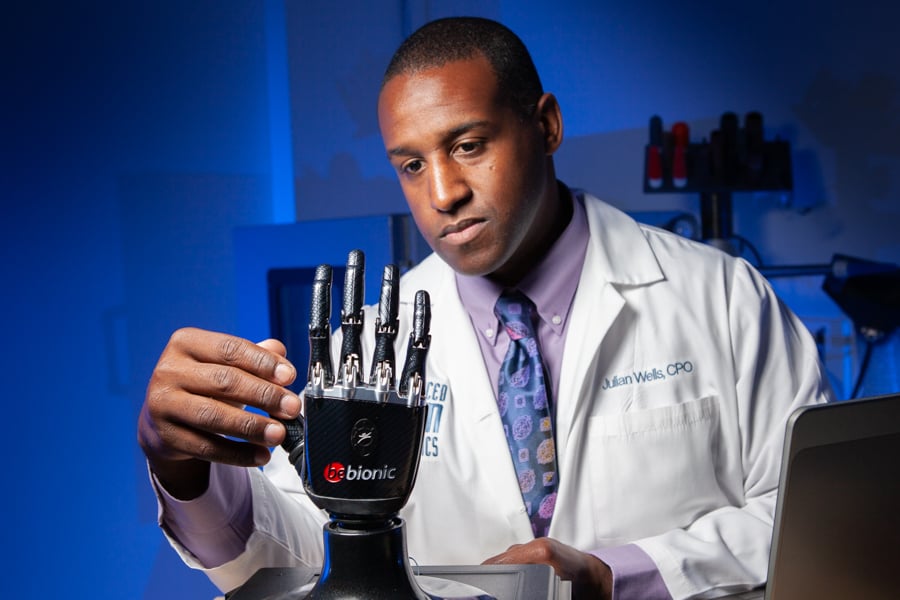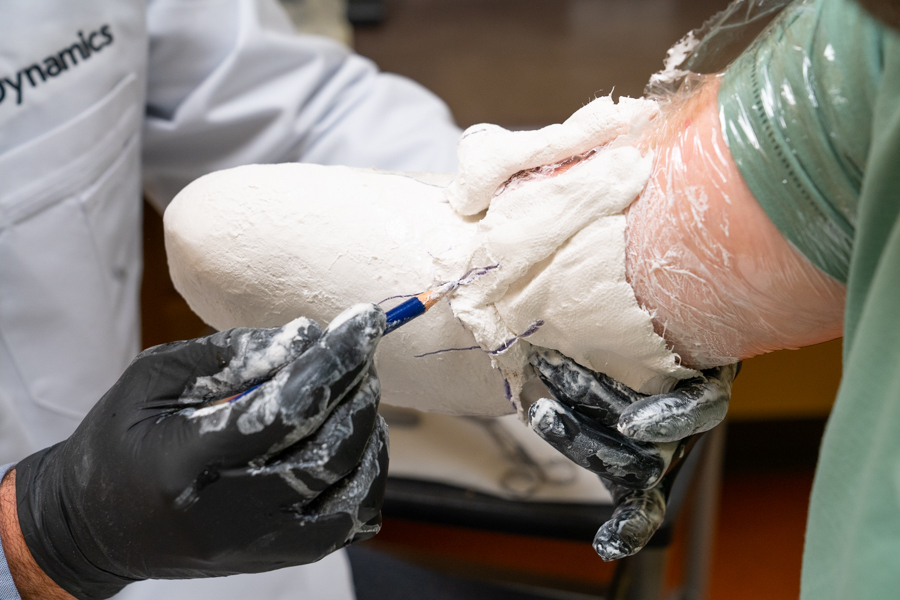When introduced to the world of prosthetic care, many people think that one care provider is pretty much the same as the next. Well, we’re here to say: nope! The biggest difference between us and other prosthetic care providers is that we are the most experienced upper limb prosthetic care provider in the world and the only provider that focuses exclusively on upper limb prosthetic rehabilitation. But that’s not the only difference. Read on to learn more.
Our years of experience
As upper limb (UL) prosthetic rehabilitation specialists, we work exclusively with the smallest subset of the amputee population (less than 10 percent worldwide), who also have the most specialized prosthetic challenges. This means that our clinical team successfully rehabilitates hundreds of patients around the world each year using our internationally respected care model and proven outcome measures (more on that below), while most general prosthetic providers may only attempt one or two upper limb cases in the same time period. This is one of the reasons we think it's so important for physicians and insurance companies to allow patients to choose their own prosthetic care provider — all patients should have the option to choose a provider with the most experience.
Our on-site clinical therapy specialists
Our on-site therapists work with our upper limb loss patients to support the fitting process, provide training that’s relevant to each person’s goals, and help them shift into life as capable, independent prosthesis users. Therapy services are integrated directly into the Comprehensive Accelerated Fitting Process™ and follow a phased approach to maximize the rehabilitation potential of each patient. This results in more successful, independent and functional prosthesis users.
Our silicone sockets
Silicone is a material that feels a lot like skin. It cushions and cools. We use it in most of our custom-made sockets. Before silicone, we were limited to only using thermoplastics for our prostheses (which other prosthetic providers still use in most of their devices), but we found that when silicone is appropriate for the individual and their amputation, it offers many benefits. You can read more about those benefits, including flexibility, scar-healing abilities and less heat build-up, in our article about silicone sockets.
Our Comprehensive Accelerated Fitting Process™
Experience has shown us that people with upper limb differences have better rehabilitation outcomes when the prosthetic fitting process is completed in a short span of time. Our Comprehensive Accelerated Fitting Process™ (CAFP™) gives focused, personalized attention to each patient over a period of one to five days. During this time, an upper limb prosthetist and clinical therapy specialist work together to develop a rehabilitation plan, cast and fit an initial prosthesis, and guide the patient in how to use it for daily tasks. This interactive process allows our clinical team to tailor the prosthesis in real time, giving patients confidence and maximizing their rehabilitation.
Our holistic approach
Our individualized, holistic approach to prosthetic rehabilitation gives people the emotional support, tools and resources they need to begin moving forward. We make sure that we focus on the goals of our patients, including work and hobbies. We also check in with how our patients are feeling as they recover. One of the ways we assess our patients is with the Wellness Inventory, an Arm Dynamics patient screening tool. It’s presented in a question-and-answer format by a clinical therapy specialist. This confidential, one-on-one interaction can help us understand each patient's feelings and, if appropriate, encourage them to consider seeking more specialized emotional support. The Wellness Inventory helps us guide each patient’s rehabilitation.
Our focus on outcome measures
Outcome measures can be an effective way to assess patient progress and improve patient outcomes. However, due to the small percentage of people with upper limb loss, assessment tools designed specifically for this patient population are scarce. In response to the clear need for more useful outcome measures designed specifically for the upper limb loss patient population, our Arm Dynamics clinicians have developed and tested three novel assessment tools: the Capacity Assessment of Prosthetic Performance for Upper Limb (CAPPFUL™), the Comprehensive Arm Prosthesis and Rehabilitation Outcomes Questionnaire (CAPROQ & CAPROQ-S™) and the Wellness Inventory, which we mentioned above. Each of these tools provides a body of specific patient information, that when combined, offers a broader understanding of the person and the challenges they’re facing. This holistic view makes it possible for us to refine each patient’s rehabilitation plan to improve outcomes.
Our peer support network
Members of our peer support network are patient advocates who want to pay forward the help they have received by connecting with people who are just beginning their prosthetic journey. Patient advocates are available by phone, email, social media and sometimes in person. Mental health is an important aspect of each patient’s rehabilitation; therefore, we strive to reassure our new patients that we are more than just a prosthetic company: We are a community of people who are here to support our patients.
Phew! Okay, we really could go on about what makes us stand out, but we certainly don’t need to brag. We would love for you to schedule a consultation and see for yourself why our patient satisfaction rate is twice as high when compared to our patients’ previous providers. You can schedule a consultation or ask any questions you may have by contacting us. Want to share what you think makes our Arm Dynamics centers different? Please let us know in the comments below.






%20President%20and%20Senior%20Clinical%20Director.jpg?width=600&height=600&name=John%20M.%20Miguelez%2c%20CP%2c%20FAAOP(D)%20President%20and%20Senior%20Clinical%20Director.jpg)










Comments (2)